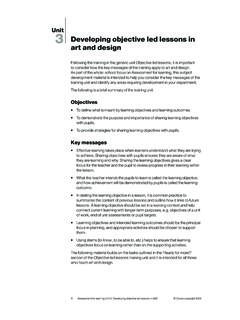Transcription of Infrastructure delivery management support - …
1 197 12 Infrastructure delivery management support Introduction The aim of the Infrastructure delivery improvement programme (IDIP) is to build the capacity to support improvement in the planning, procurement and management of Infrastructure delivery at the provincial level. The National Treasury designed the programme in collaboration with the departments of Basic Education, Health and Public Works, the Development Bank of Southern Africa (DBSA) and the Construction Industry Development Board (CIDB). Government invests in Infrastructure , such as healthcare facilities, schools, housing and roads, in order to provide citizens with access to services and to promote social wellbeing. South Africa s Infrastructure challenges are not primarily the result of a lack of funding but are caused by institutional failures and a lack of appropriate capacity within departments.
2 The main provincial Infrastructure departments include health, education, public works, roads and transport. The IDIP was introduced in 2004 to address these problems of lack of capacity and institutional failures which stem from four factors: Inadequate Infrastructure planning and a lack of integration in planning, budgeting and execution Deficiencies in the institutional environment supporting delivery processes Lack within departments of the skills and capacity needed to plan and manage Infrastructure delivery Poor information management and reporting. This chapter reviews the three phases that the IDIP has been through and presents the medium-term outlook. The IDIP builds capacity in Infrastructure planning, procurement and management PROVINCIAL BUDGETS AND EXPENDITURE REVIEW: 2010/11 2016/17 198 IDIP phases Phase 1: Pilot The first phase, initiated in July 2004, was a pilot programme to develop the methodologies and tools needed to build and support Infrastructure management capacity in three selected provincial departments: Education, Health, and Roads and Transport.
3 The pilot phase lasted for 10 months and informed the design of phase 2. Phase 2: developing tools and practices The second phase, which began in June 2006, built on the lessons learned and practices developed in the pilot phase. A programmatic approach and management system were developed for the full rollout of the programme, which was implemented in the provincial departments of Health, Education and Public Works. As part of phase 2, the Infrastructure delivery management Toolkit was developed to map out best practice delivery processes. This became the backbone on which improvement initiatives were developed in participating departments. The Toolkit was in turn supported by a range of methodologies, including the IDIP Risk System, a Change Enablement Methodology, and a Knowledge management Framework.
4 Twenty-seven technical assistants were placed in provinces to ensure knowledge and skills transfer with regard to the methodologies, tools and process. An effectiveness reporting system was developed to monitor progress made by the programme. In 2009, an independent review concluded that phase 2 of the IDIP had improved provincial capacity to plan and manage Infrastructure but that provinces still needed support to institutionalise Infrastructure delivery practices and build sustainable capacity. The key challenge facing departments was the ability to ensure knowledge and skills transfer. To create sustainability, there needs to be a shift from dependence on technical assistants to a position where departmental staff assumes responsibility for the IDIP systems and tools.
5 A particular impediment had been the lack of adequate organisational arrangements and of people to whom to transfer the skills. It became clear that a special organisational development approach was needed to address this problem. As a result, a process was initiated to design a Human Resource Capacitation Framework. This phase of the development of the IDIP also established provincial Infrastructure management coordinating structures, led by provincial treasuries in collaboration with the provincial departments of Education, Health and Public Works within which this phase was being implemented. These structures coordinated and monitored Infrastructure delivery activities in the provinces and supported the implementation of best practice approaches.
6 Phase 2 of the IDIP development process was formally closed in March 2010. Phase 2 built on lessons and best practices developed in the pilot phase The IDIP has improved planning and management , but provinces still need support to build capacity CHAPTER 12: Infrastructure delivery management support 199 Phase 3: developing the Infrastructure delivery management system Based on the recommendations of the independent review of phase 2, the third phase of the development of the IDIP began in April 2010. The objective of this phase was to embed the methodologies of phase 2 and to design the appropriate human resource capacitation strategy to implement them. In the latter part of phase 2, through the CIDB review work began on the Toolkit. The aim was to bring it into line with best practices while making it more accessible to departments.
7 The revised Toolkit was released on a web-based platform in October 2010 and became the basis for the development of a structured Infrastructure delivery management System (IDMS), which is a standardised approach to Infrastructure planning, procurement and management for the public sector. The IDMS in turn allowed the Human Resource Capacitation Framework to define the appropriate capacity requirements for provincial departments of Education, Health and Public Works in line with the relevant delivery processes. The framework focussed on the ability of Infrastructure units within departments to perform tasks, produce outputs, define and solve problems and make informed decisions. It addressed four dimensions: institutions, people, and organisational behaviour and human resources systems.
8 To assist with institutionalising the people dimension of the framework, through the Division of Revenue Act (DORA) funding was provided to provincial Health and Education departments so that they could employ the necessary managerial, financial and technical personnel. Key focus areas are: Development of appropriate organisational structures aligned to legal mandates Identification of IDMS functions to be performed within organisations based on approved provincial IDMS frameworks Identification of occupations required Development of IDMS job descriptions Competence standards Qualification/professional registration and skills audits. Achievements An independent review of phase 3 of the development of the IDIP was conducted during October and November 2013.
9 It concluded that the following IDIP outputs supported the institutionalisation of the IDMS within provinces: Provincial IDMS agreements were developed to support institutional arrangements. These agreements address the key challenges as outlined in the Auditor General s Report of August 2011. The Human Resource Capacitation Framework, supported by the DORA, was utilised to set out the conditions for the employment of skilled Infrastructure officials within the health and education sectors. Phase 3 of the IDIP focused on developing an Infrastructure delivery management system Sustainability requires appropriate human resources and organisational design PROVINCIAL BUDGETS AND EXPENDITURE REVIEW: 2010/11 2016/17 200 A pilot course (the Infrastructure delivery management Programme) was developed in collaboration with the University of Pretoria to formalise the IDMS methodology.
10 This allowed ad hoc training activities to be structured in a formalised manner. A maturity model was conceptualised to measure the capability and delivery performance of departments implementing the IDMS. A quality assurance framework was developed, in conjunction with the Technical Assistance Unit, to support the management of consultants within the IDIP. Medium-term outlook The review conducted at the end of phase 3 concluded that the IDIP had made progress in institutionalising the IDMS in some departments but that its sustainability in others was at risk. The review recommended that the IDIP should be extended for a further three years to ensure that the IDMS methodology was embedded within departments. The design of phase 4 of the IDIP was shaped by the review recommendations.
















